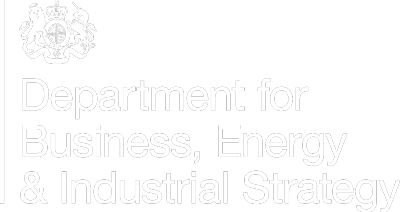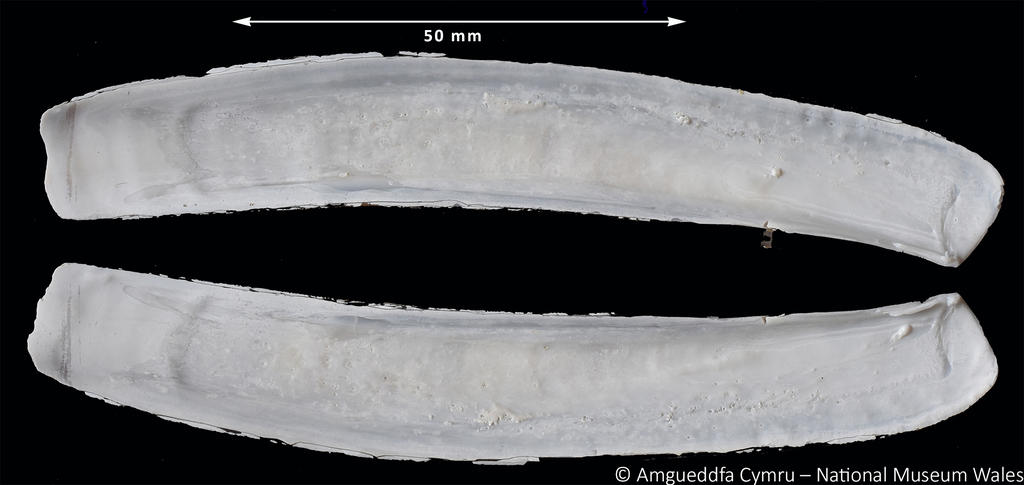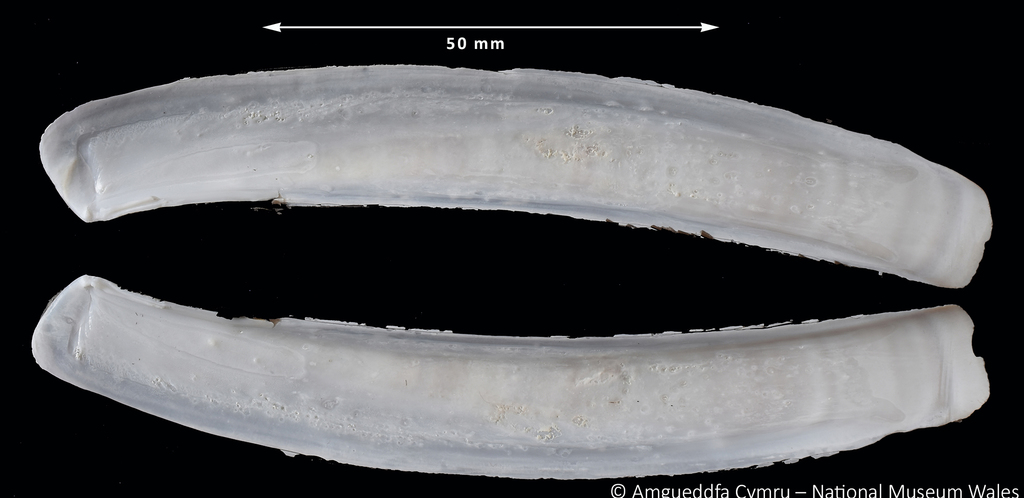Ensis terranovensis Vierna & Martînez-Lage, 2012
Solenoidea : Pharidae | Non-native |
| Tebble name: | |
| Smith & Heppell name: |
To size: To 170mm. Shell Structure: Brittle. Equivalve: Equivalve. Equilateral: Inequilateral, beaks at the anterior end. Outline: Ensiform, Anterior margin rounded, posterior margin truncated. Dorsal margin concave in some individuals, and almost or completely straight in others; ventral margin weakly to conspicuously convex.
Sculpture: Of co-marginal lines and growth stops. Margin: Inner margin smooth. Ligament: External, a long narrow brown/black band behind the beaks. Hinge: LV with two rather bulbous cardinals and two laminar posterior laterals, one lying above the other; RV with a single laminar cardinal and a single posterior lateral. Pallial Musculature: Pallial sinus S-shaped, Posterior adductor to pallial sinus ratio ‘distance b’/‘distance a’, ranging between 1.1 and 2.3 (mean 1.6; SD 0.3), therefore, distance between the posterior end of the posterior adductor scar and the beginning of the pallial sinus (‘distance b’), always greater than the length of the posterior adductor scar itself (‘distance a’). The ratio Shell Width/ 'distance b' is always less than 2. Periostracum: Younger individuals, olive green, dark brown, and grey coloured; older individuals, dark brown, whitish, and in some cases, reddish. Additional Characters: In the closely related E. leei Huber, 2015 (= E. directus of authors) the distance between the pallial sinus and the posterior adductor is less than the length of the posterior adductor itself. The ration of the Width/ 'distance b' ranges from greater than 2 to 4 in E. leei.
Distribution & Ecology
In Newfoundland it has been found living in loose packed mud, sand and shell gravel at depths between 6–11m.
Shells identified as E. directus that are relatively more slender should be checked against E. terranovensis.
Shallow sublittoral.
Depth Range

Additional Information & Related Species
Related Species
Solenoidea : Pharidae
References
Listed are literature citing Ensis terranovensis Vierna & Martînez-Lage, 2012. Reference containing the species Type Description is highlighted.
|
Vierna J., Cuperus J., Martínez-Lage A., Jansen J.M., Perina A., Van Pelt H. & Vonzález-Tizón, A.M. 2014. Species delimitation and DNA barcoding of Atlantic Ensis (Bivalvia, Pharidae). Zoologica Scripta. 43(2): 161-171. |
|
Vierna, J., Jensen, K.T., González-Tizón, A.M., Martínez-Lage, A. 2012. Population genetic analysis of Ensis directus unveils high genetic variation in the intriduced range and reveals a new species from the NW Atlantic. Marine Biology. 159(10): 2209-2227. |
Resources
- Conchological Society
of Great Britain & Ireland
Provides resources for understanding, identifying, recording, and conserving molluscs - CLEMAM
Check List of European Marine Mollusca - MarLIN
The Marine Life Information Network for Britain and Ireland (MarLIN) provides information for marine environmental management, protection and education. It is a centre of excellence in spatially based and time-series marine biological information and supports good stewardship in the marine environment. - NBN Gateway
National Biodiversity Network's Gateway. Use it to explore UK biodiversity data, as contributed by participating data providers. - BivAToL
- MarBEF
- Malacological Society
- Unitas Malacologica
- Census of Marine Life
- MarBEF
MarBEF, a network of excellence funded by the European Union and consisting of 94 European marine institutes, is a platform to integrate and disseminate knowledge and expertise on marine biodiversity, with links to researchers, industry, stakeholders and the general public.








